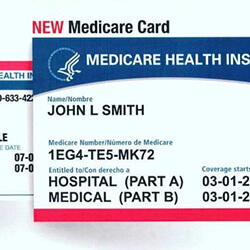
Billing for Surgical Complications: Modifiers -58, -78 and -79
Occasionally a patient may experience a surgery complication that will require additional treatment. The payment for the initial surgery also includes post-op care during the global period (excluding testing). Under Medicare, the global period includes a postoperative time period for minor surgeries that can be either 0 or 10 days. For major surgeries the global… Read More

2019 Ophthalmology CMS ICD-10 Updates
This week the Centers for Medicare and Medicaid Services (CMS) released the ICD-10-CM updates for FY 2019. The 2019 ICD-10-CM codes are to be used for patient encounters and discharges occurring from October 1, 2018 through September 30, 2019. Below is a list of ICD-10 code changes that impact ophthalmology. For the ICD-10 codes below:… Read More

The Gold Standard of Outsourcing: Increase Your Revenue with Eye Med Management Solutions
Cost cutting may be a big factor when looking to outsource, but it’s not the only reason to consider. Outsourcing your medical billing can significantly increase your revenue stream and efficiency. Every business wants to hire the best people, with the best education and credentials, and in turn produce the best results. When you outsource… Read More

Cataract Surgery Billing and Coding Tips
June is Cataract Awareness Month and we’re giving you our top billing and coding tips for cataract surgery. Cataracts are the leading cause of vision loss in the United States, affecting over 22 million people. To reduce the risk of an audit and get paid correctly and in a timely manner, it’s imperative that your… Read More

Coding Tips for Common Ophthalmology Services: Part Two
This is the second blog in a two part series on common ophthalmology services and how to avoid billing errors. To reduce the risk of an audit and costly billing mistakes, here are some tips on common ophthalmology tests and procedures. Fluorescein angiography. Use CPT code 92235, Fluorescein angiography (includes multiframe imaging) with interpretation and… Read More

Coding Tips for Common Ophthalmology Services: Part One
We’ve all heard the saying “it takes a village” – and this includes ophthalmology billing and coding. Exams, testing, and minor and major surgical procedures all take a team to coordinate and complete. The physician is ultimately responsible for selecting the proper code, however, it takes a team effort to properly document, code, and bill… Read More

Improving Your Practice A/R
Well-run practices watch their collections like hawks. The financial health of your practice is directly correlated with your A/R numbers. How can you bring in the most cash? How can you collect the most amount of money with the least amount of time and effort? These are questions your practice needs to think about when… Read More

Boosting Patient Collections Up Front
With rising out of pocket costs in the healthcare system, the shift to patient financial responsibility is increasing. A Kaiser Family Foundation found the average deductible increased 32% from 2009 to 2014. Educating front desk staff, insurance verification, and a clear office financial policy are important components in collecting payments up front. Any of these… Read More

Mastering ICD-10: Diabetic Retinopathy and AMD
Have you mastered the latest ICD-10 codes for Diabetic Retinopathy and AMD? If you haven’t don’t fear, Eye Med Management Solutions to the rescue! The tables below include the coding for nonproliferative diabetic retinopathy (NPDR), proliferative diabetic retinopathy (PDR), wet age-related macular degeneration (AMD), and dry age-related macular degeneration (AMD). It’s important to remember that… Read More

New Medicare Cards
Doctors, be on the lookout for new Medicare cards starting in April. Medicare is issuing new cards for all patients in an effort to keep patient information more secure. The cards will look the same however instead of a social security number, each patient will have a Medicare Beneficiary Identifier (MBI) to protect identity and… Read More

